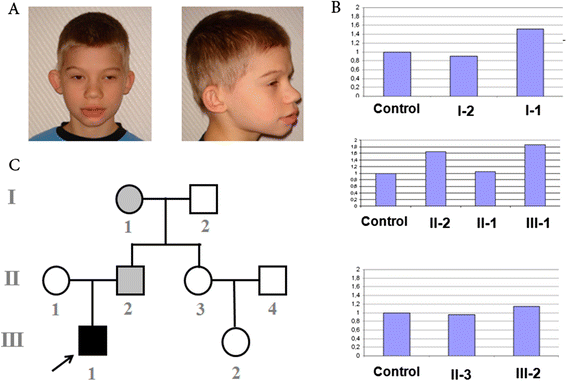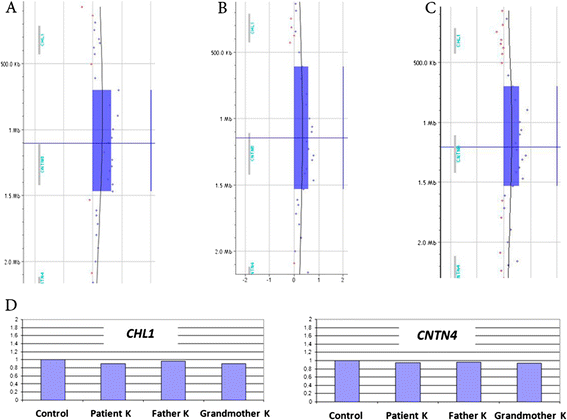Single gene microdeletions and microduplication of 3p26.3 in three unrelated families: CNTN6 as a new candidate gene for intellectual disability
- PMID: 25606055
- PMCID: PMC4299808
- DOI: 10.1186/s13039-014-0097-0
Single gene microdeletions and microduplication of 3p26.3 in three unrelated families: CNTN6 as a new candidate gene for intellectual disability
Abstract
Background: Detection of submicroscopic chromosomal alterations in patients with a idiopathic intellectual disability (ID) allows significant improvement in delineation of the regions of the genome that are associated with brain development and function. However, these chromosomal regions usually contain several protein-coding genes and regulatory elements, complicating the understanding of genotype-phenotype correlations. We report two siblings with ID and an unrelated patient with atypical autism who had 3p26.3 microdeletions and one intellectually disabled patient with a 3p26.3 microduplication encompassing only the CNTN6 gene.
Results: Two 295.1-kb microdeletions and one 766.1-kb microduplication of 3p26.3 involving a single gene, CNTN6, were identified with an Agilent 60K array. Another 271.9-kb microdeletion of 3p26.3 was detected using an Affymetrix CytoScan HD chromosome microarray platform. The CHL1 and CNTN4 genes, although adjacent to the CNTN6 gene, were not affected in either of these patients.
Conclusions: The protein encoded by CNTN6 is a member of the immunoglobulin superfamily and functions as a cell adhesion molecule that is involved in the formation of axon connections in the developing nervous system. Our results indicate that CNTN6 may be a candidate gene for ID.
Keywords: 3p26.3 microdeletion; 3p26.3 microduplication; CNTN6; Intellectual disability; Reciprocal microdeletions/microduplications.
Figures





References
-
- Mikhail FM, Lose EJ, Robin NH, Descartes MD, Rutledge KD, Rutledge SL, Korf BR, Carroll AJ. Clinically relevant single gene or intragenic deletions encompassing critical neurodevelopmental genes in patients with developmental delay, mental retardation, and/or autism spectrum disorders. Am J Med Genet A. 2011;155A:2386–2396. doi: 10.1002/ajmg.a.34177. - DOI - PubMed
LinkOut - more resources
Full Text Sources
Other Literature Sources
Miscellaneous

